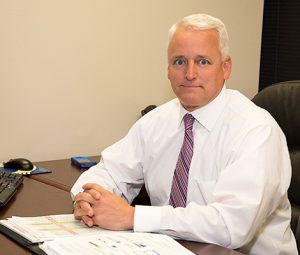In 2018, the 401(k) plan celebrated its 40th birthday! Though extremely popular today, 401(k) plans came about almost by accident. IRC Section 401(k) was passed into law as part of the Revenue Act of 1978 and was included to limit executive compensation. However, in 1980, Ted Benna of the Johnson Companies used the provision to create and get IRS approval of the first 401(k) plan for his company. For this he is often referred to as the father of the 401(k).
At its inception, employees could contribute up to 25% of their salary with a maximum of $45,475 per year. Through the mid-80’s, the limits were consistently reduced to a low of $7,000. Since that time, they have been increased through cost of living adjustment to the current 2019 limit of $19,000. In 2001, the ability to contribute catch-up and after-tax Roth contributions was passed into law with the Economic Growth and Tax Relief Reconciliation Act.
A lot has changed with 401(k) plans in the last 40 years. In September of 2018, 401(k) plans held an estimated $5.6 trillion in assets! This represents nearly 20% of the $29 trillion in US retirement assets (total of both public and private sector plans). In 2018, the Plan Sponsor Council of America (PSCA) released their 61st Annual Survey. The survey includes the data of over 600 defined contribution plan sponsors with over 40% of responders sponsoring plans with 200 participants or less. While packed with great statistics regarding its findings, the survey highlights some interesting trends in the retirement plan industry.
The good news for 401(k) plan participants: contributions to retirement plans are on the rise. The survey showed that participants saved an average of 7.1% of pay in 2017, up from 6.8% in 2016. This, combined with an increased employer contribution percentage of 5.1%, gives a total savings rate of more than 12%! Roth contributions keep rising with 70% of companies offering this option, especially among plans with fewer than 50 employees. Additionally, the survey showed a trend toward more generous matching formulas with the use of dollar-per-dollar matching contributions above 3% of pay, increasing from 24.1% to 35.8%.
Other plan provision trends show that companies continue to adopt automatic enrollment with 61.2% of plans now using it to boost enrollment. However, automatic enrollment is mostly applied to new hires only. Sixty percent of the plans that elect to use automatic enrollment have default contribution rates above 3%. Nearly 85% of plans allowed for participant loans, with 55% allowing for only one loan at a time, 35% allowing for 2 loans, and 10% allowing for 3 or more.
You can learn more about the PSCA or obtain a copy of the full survey on their website at www.PSCA.org.
This newsletter is intended to provide general information on matters of interest in the area of qualified retirement plans and is distributed with the understanding that the publisher and distributor are not rendering legal, tax or other professional advice. Readers should not act or rely on any information in this newsletter without first seeking the advice of an independent tax advisor such as an attorney or CPA.
©2019 Benefit Insights, LLC All rights reserved.













